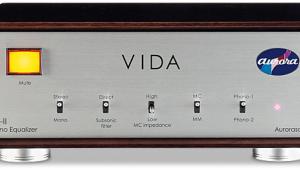Primare R32 (£850)

According to Primare this large chassis makes it easier to keep sensitive signal circuits away from the PSU in a bid to reduce noise. Also justifying the R32’s weight is its R-core type transformer with separate windings for each channel. There are no capacitors in the signal path and a shield-plate inside the unit further isolates the signal circuits from the PSU.
For MC cartridges, the R32 offers seven load resistance settings between 10ohm-47kohm, with gain set at 62dB. For MM types, gain is factory set at 41.4dB [see Lab Report] and there’s also a 5dB boost setting which is accessed from inside the casework. (Although given that the rest of the settings are on the back panel, and removing the top panel means undoing ten screws, this seems a bit of a design flaw. Why couldn’t this setting be accessed via jumpers on the underside or the back panel?)
SPACE TO BREATHE
Beginning with Harvest, I was immediately pulled into the album by the soundstage’s depth which the R32 lays out in front of you. Each instrument had plenty of space to breathe and none fought to dominate a song. Young’s slide guitar was full of detail and I noticed its fading reverb far more through the Primare than the other phono amps, which gave it a natural edge.
The R32 has a mellow, unfazed personality which marries rhythm and emotion with a balanced sound that is easy to live with. ‘Spiralling’ flowed forth at an unforced pace, allowing the song the space to grow, and while the piano sounded laid-back it gelled with the bass guitar in a way that none of the other phono stages had been able to capture. The higher horns within the Respighi piece were deeper in the mix, and while the R32 might have lacked the last word in power compared to the MF, for example, it had just the right amount of attack to keep me engaged. Indeed, it was this inherently ‘natural’ and well-ordered perspective that won the day for the R32. Finally, more than with any other phono stage, the Primare’s sound continued to improve with each cartridge upgrade. The R32 just gets better!
Originally published in the January 2012 issue




















































